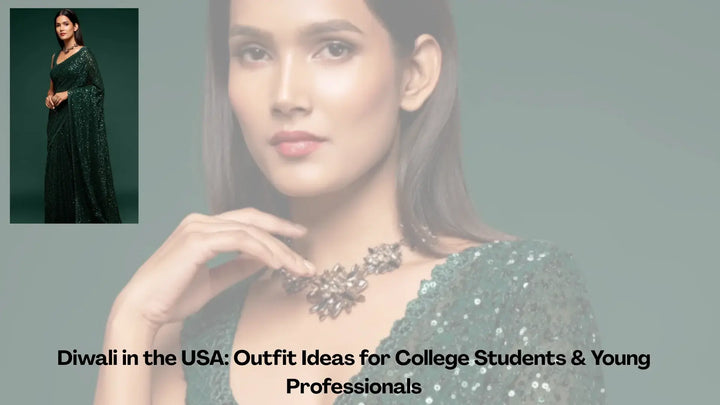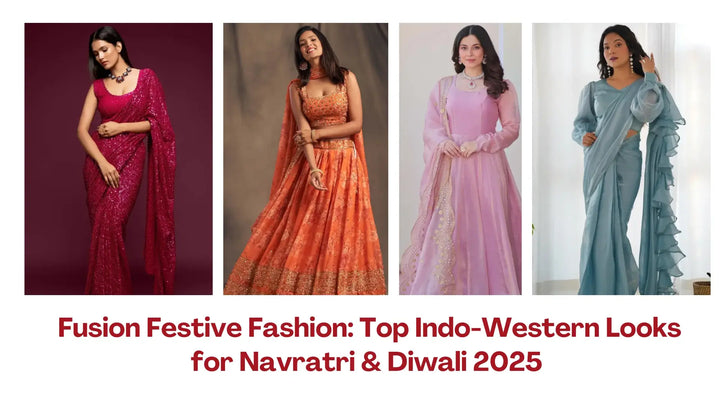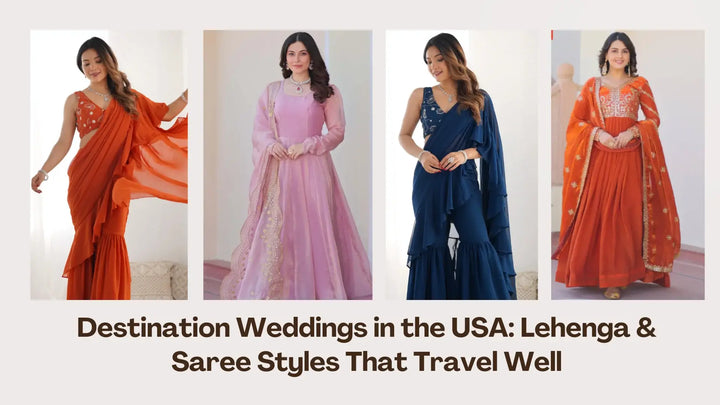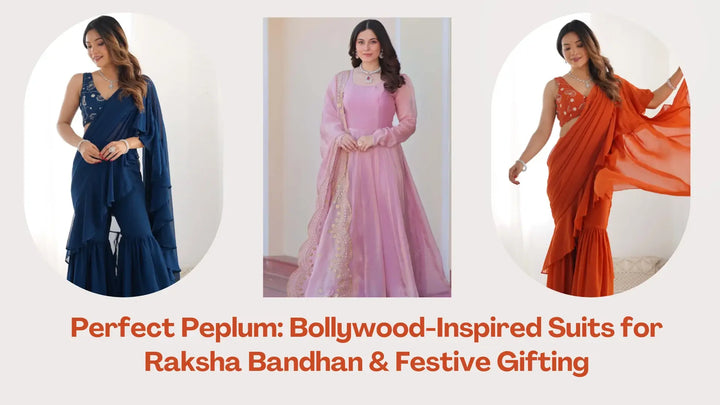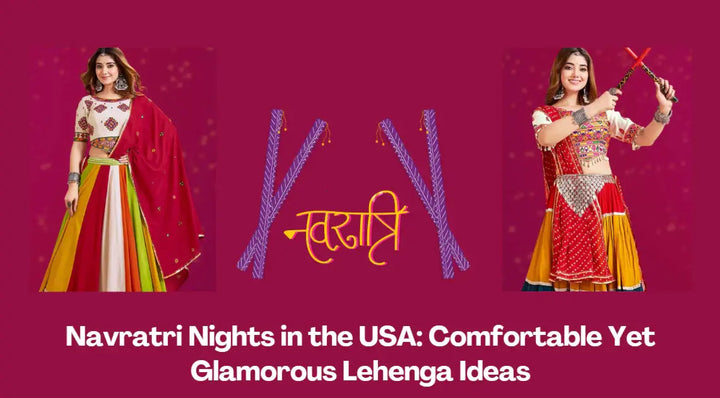Navratri Festive Vibes: A Closer Look at Women's Ethnic Wear
Navratri is a festival celebrated in India with vibrant colors and a rich cultural heritage. In this festival, people come together to honor the goddess Durga and enjoy the festive atmosphere. Women's colorful and traditional clothing is one of the most exciting aspects of Navratri. We will examine women's ethnic wear during Navratri, exploring its cultural significance, styles, and significance in terms of fashion.
The Significance of Ethnic Wear During Navratri:
The nine nights of Navratri are celebrated with fervor and devotion. Worship, dance, music, and social gatherings are common. During this festival, traditional clothing symbolizes respect for Indian traditions and culture. Women especially take great pride in wearing ethnic clothing.
Styles of Women's Ethnic Wear for Navratri:
Chaniya Choli:

Chaniya Choli is the most iconic attire for Navratri. The Chaniya skirt is flared and colorful, while the Choli blouse is fitted and intricately embroidered. With oxidized silver jewelry, bangles, and a traditional waistband called marbandh, this outfit is completed with an elegant odhani, or dupatta, draped artistically.
Ghagra Choli:

Another popular Navratri dress is the Ghagra Choli. It is similar to the Chaniya Choli, but the skirt is usually longer so that it sways gracefully during the Garba and Dandiya Raas. Ghagra Cholis are a sight to behold because of their intricate embroidery and mirrorwork.
Sarees:

Traditional silk sarees such as Banarasi, Kanjivaram, and Patola are popular choices during Navratri. Sarees are elegantly draped, and the blouse is usually embellished with intricate designs. Colors and patterns are selected based on regional customs and individual preferences.
Lehenga:

Lehengas are versatile for Navratri as they are comprised of a flared skirt, a short choli, and a dupatta. Their beauty lies in their wide range of designs, from simple and elegant to extremely intricate, catering to many different tastes and styles.
Cultural Diversity in Navratri Attire:
The different regional styles of Navratri dresses reflect India's cultural diversity. For example:
Gujarati Garba Attire:

Women wear colorful Chaniya Cholis and embellish themselves with silver jewelry during the Gujarati celebration of Navratri. It is common for the attire to feature intricate handwork and mirror embellishments.
Bengali Durga Puja Attire:

Women in West Bengal celebrate Durga Puja, a festival that is similar to this one, by wearing elegant silk sarees that are often of vibrant red and white color.
Rajasthani Ghagra Cholis:

Embroidered with intricate patterns, mirror work, and tie-dye techniques, Rajasthan's vibrant Ghagra Cholis captures the essence of its unique culture.
South Indian Silk Sarees:

Silk sarees are most commonly worn during Navratri in southern India. The traditional Kanjivaram and Mysore silk sarees have a timeless elegance and grace.
Accessories and Beauty:
Women pay particular attention to accessories, makeup, and hairstyles when completing the Navratri look, which includes necklaces, earrings, and bangles. Silver jewelry, such as necklaces, earrings, and bangles, is a staple for many. Mehndi designs, including intricate mehndi designs on hands and feet, also add a sense of artistic expression. Makeup is bold, with bright eyeshadows and lip colors. A variety of hairstyles are available, including traditional braids decorated with flowers to intricate buns.
We at Zeel Clothing recognize Navratri as a celebration of Indian culture, tradition, and fashion rather than as just a festival. Women's ethnic wear during this festive season showcases the incredible diversity of Indian culture. Each style reflects regional customs and personal tastes, regardless of whether it is the stunning Chaniya Choli, the timeless saree, or the regal Ghagra Choli. During Navratri, women display their ethnic attire pridefully with vibrant colors, intricate designs, and festive vibes, making it an enchanting time.

